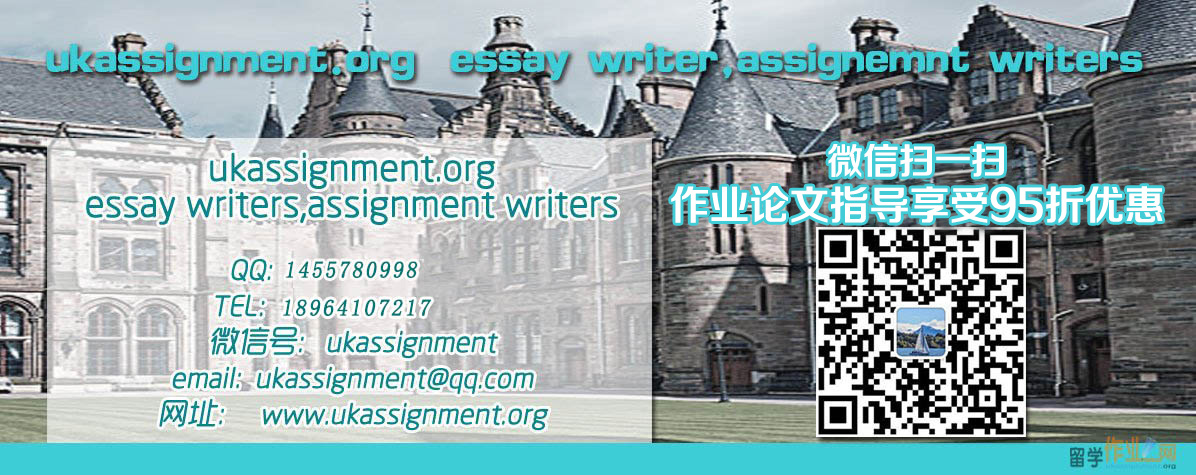|
本文是组织专业的留学生Essay范例,题目是“Pepsico Foods Western Canada – Organizational Analysis(百事食品加拿大西部-组织分析)”,百事食品西加拿大分公司(PFWC)是百事食品加拿大分公司(PFC)的一部分,PFC是百事加拿大分公司的两个业务部门之一。PFC有两个主要的投资组合-菲多利和桂格食品。百事加拿大公司的母公司是百事公司。PFWC通过创新、服务承诺和规划(百事公司,2018年)推动增长的战略嵌入了母公司的总体绩效与目的目标战略,这构成了本分析的核心。 1.0 Vision, Mission and Strategy 愿景、使命和战略 Pepsico Foods Western Canada (PFWC) is part of Pepsico Foods Canada (PFC) – one of two business units that make up Pepsico Canada. PFC has two main portfolios – Frito-Lay and Quaker Foods. The parent company of Pepsico Canada is Pepsico Inc. PFWC’s strategy to drive growth through innovation, service promise and programming (Pepsico, 2018) is embedded in the parent company’s overarching Performance with Purpose goals strategy which forms the core of this analysis. Pepsico Canada has a clear vision and mission statement easily located on the company’s website. Along side the vision and mission statements are a “Performance with Purpose” philosophy that guides the company’s strategy for achieving the corporate business objectives. 百事加拿大公司的网站上有清晰的愿景和使命宣言。伴随着愿景和使命的陈述,是一种“有目的的绩效”的哲学,指导公司实现企业经营目标的战略。
In analysing the vision mission and strategy, it is pertinent to quote the statements: “Our mission is to be the world’s premier consumer products company focused on convenient foods and beverages. We seek to produce financial rewards to investors as we provide opportunities for growth and enrichment to our employees, our business partners and the communities in which we operate. In everything we do, we strive for honesty, fairness and integrity.”(Pepsico, 2018)
“Our vision is put into action through programs and a focus on environmental stewardship, activities to benefit society, and a commitment to build shareholder value by making PepsiCo Canada a truly sustainable company.”(Pepsico, 2018)
“At PepsiCo Canada, we’re committed to achieving business and financial success while leaving a positive imprint on society – delivering what we call Performance with Purpose.” (Pepsico, 2018)
A close look at these statements and the materials provided by Pepsico for this class project reveal a well thought out strategy. One of the classic definitions of strategy is that it includes a pattern of objectives, purposes or goals and the major policies and plans for achieving these goals. According to Hambrick and Fredrickson (2001), a good strategy should have five elements or parts, essentially providing answers to five questions – arenas, vehicles, differentiators, staging and economic logic. A review of Pepsico foods vision, mission and strategy framework clearly answers these questions as follows
Arenas – Pepsico clearly states that the company will be active in the consumer products space with a focus on food and beverages
Vehicles – The Performance with Purpose strategy incorporates human, environmental and talent sustainability components. Offering a broad range of high quality food and beverage products that are healthy and tasty, while conserving the environment and developing employees are the mainstay of the company’s strategy 车辆-性能与目的战略结合了人、环境和人才的可持续性组成部分。提供一系列健康可口的高品质食品和饮料,同时保护环境和发展员工是公司的主要战略
Differentiators – Pepsico Western Canada has identified innovation, service promise (delivery) and programming as the three pillars of growth (Pepsico, 2018). Variety of new product designs, direct-to-store delivery and programming partnerships with major sports and gaming audiences give the company a competitive edge
Staging – The three elements discussed above constitute the substance of the strategy or what is planned for execution. Staging addresses the speed or sequence of moves that the company takes to increase the likelihood of success. From the presentations and visit to Pepsico, there appears to be a series of plans being executed is stages to grow the existing businesses while exploring partnerships in spaces like E-commerce for the navigating the changing business landscape of consumer-packaged goods retail.
Economic Logic – From speaking to the Pepsico executives during the field office visit, branding, costs reduction and reaching the customer appear to be key components driving the company’s economic benefits. A focus on display execution and running a lean organization were clear. Tight controls on product quality (seed to shelf) and the concept of keeping products fresh will also ensure customer trust and loyalty.
2.0 Resources资源 Pepsico Inc. (and consequently PFWC) has a wide range of resources available for executing its business objectives. Tangible, intangible and human resources are typically the source of a firm’s capabilities and below is an analysis of resources available to the company. 百事公司(以及PFWC)拥有广泛的资源来执行其业务目标。有形的、无形的和人力资源是公司能力的典型来源,下面是对公司可用资源的分析。
2.1 Tangible Resources
2.1.1 Financial Resources: Pepsico Inc.’s 2017 Annual report is the basis for this analysis. The liquidity ratios – Current ratio and Quick ratio for 2017 are 1.5 and 1.3 (See Appendix A) respectively and have been trending up since 2015. This shows a strong ability to meet obligations with the companies most liquid assets. Sales revenue of $63.5bn was reported in 2017 out of which $18.3bn was contributed by Frito-Lay North America and Quaker Foods North America, which PFWC directly rolls up to. Pepsico Foods Inc. also had strong cash flows with $7bn resulting from operating activities in 2017. More financial analysis is discussed in Section 4.0 of this report. The results show that the company has a high borrowing capacity as well as strong internal funds generation abilities to support business plans.
2.1.2 Physical Resources: The 2017 annual report puts the value of Pepsico Inc. property, plant and equipment at ~17bn (net of accumulated depreciation). There are several plants in the US and several other global locations. In Western Canada, PFWC has a large-scale manufacturing plant with recent up-to-date technology situated in Lethbridge, strategically located to serve western Canada. With recent lean initiatives, the plant is now used to execute the direct-to-store delivery strategy of PFWC where customers (retail stores) have their orders loaded directly from the plant. There are also distribution exchange centers in Calgary, Edmonton and several other hubs that are running efficiently to help achieve business objectives.
2.2 Intangible Resources 无形资源 There is an extensive portfolio of intangible resources available to Pepsico Inc. and PFWC. Patents, technology, and a strong brand are critical success factors for the company. The 2017 annual report show intangible assets worth $1.2bn net, comprising franchise rights, brands and other identifiable assets with estimated useful life of up to 60 years. Pepsico Foods have a strong reputation for producing quality products and this translates to customer loyalty and plenty of goodwill support for the company. 百事公司和PFWC拥有大量的无形资源。专利、技术和强大的品牌是公司成功的关键因素。2017年年度报告显示,无形资产净值为12亿美元,包括特许经营权、品牌和其他可识别资产,估计使用寿命可达60年。百事食品公司在生产高质量产品方面有很强的声誉,这转化为客户忠诚度和对公司的大量善意支持。
2.3 Human Resources
One of Pepsico Inc’s greatest strengths is in its people. Talent sustainability is a key component of the company’s Performance with Purpose goals. The company reported one million hours of training completed for its associates in 2017. Management commitment to increasing employee skills, providing a safe and healthy work environment and building an inclusive culture that recognizes diversity as a strategic priority is sure to help the company achieve sustainable business goals. It is also noteworthy that the company has a national community strategy that supports building strong communities by encouraging employees’ community volunteering efforts. 3.0 Capabilities and Organizational Structure 能力和组织结构 Christensen and Kaufman (2008)defined capabilities as the processes or patterns of interaction, communication, coordination and decision making through which organizations transform inputs into value-added products and services. The company has several strong processes and capabilities that have been developed over the years Christensen和Kaufman(2008)将能力定义为组织将投入转化为增值产品和服务的交互、沟通、协调和决策的过程或模式。该公司有几个强大的流程和能力,已发展多年
Pepsico Inc. (and Pepsico Foods Canada) main functional capabilities include the following:
3.1 Manufacturing/Operations: A visit to the beverage plant in Calgary revealed a lean manufacturing operation which leads one to believe that the Lethbridge plant and other manufacturing facilities would be leveraging the same strengths. The company seems to conduct its manufacturing with advanced technologies. With each operational segment focussing on a single line of products, efficiency is consistently at optimal levels.
3.2 Supply Chain: PFWC has managed a huge supply chain operation for several years and developed a robust process. With the Direct Store Delivery and efficient distribution exchange hubs, products get to the customers on time to avoid sales disruptions. Strategies for growing potato with local farmers and managing product quality from seed to shelf also gives the company a competitive advantage. The company places production plants near the main sources of raw materials to save on transportation costs. Economies of scale is the main value that Pepsico gets from its supply chain practices
3.3 Marketing and Sales: Sales revenue numbers have been impressive and could only be achieved through a strong and competent marketing team. In a rapidly changing consumer packaged goods (CPG) market, the company has continued to update its marketing strategies to meet the challenge. The company makes use of extensive media and print advertising, social media marketing, celebrity endorsement and product placement. There is a weakness in the over-dependence on large retailers for sales.
3.4 Human Resource Management: With talent sustainability being a part of the performance with purpose goals, the human resource function is an area where the company has developed significant capabilities.
The company also has a few cross-functional dynamic capabilities that are critical for success in the constantly changing business environment. These include Innovation / New Product Design, Quality Management and Research and Development and Branding.
3.5 Innovation / New Product Design:Innovation is a key dynamic capability for Pepsico Foods. The ability to develop such a wide variety of snacks and other products speaks to this strength. In the last year alone, an extended Simply line of potato chip snacks, Quaker 3 minutos and creative media ideas like the revamped Tasty Rewards program and creating experiences through programming at major sports events reflect a real strength in innovation. The weakness here is an tendency to have too many products struggling for market share.
3.6 Quality Management: The tight control on recipes, and stringent quality control regimens as the ones observed at the beverage factory ensures that the snacks and other products taste the same all the time. Keeping the snacks fresh also ensures the same great tastes all the time. During the PFWC visit, it was stated that snacks that stay on the shelf beyond the “fresh” time frame are sent to the farms as pig food. With customers assured of tasty products, PFWC will continue to keep its customer base.
3.7 Branding: Branding appears to be one of the strongest capabilities at Pepsico. The wide array of products designed and launched with distinct themes, a world-wide recognition and visibility at major global events puts Pepsico at the forefront of brand management. The excellence in display execution and the strong partnerships with retail and food service partners have enabled a strong brand reputation.
3.8 Merger and Acquisition Experience: From information gathered at interviews and class presentation, Pepsico appears to be very skilled atmergers and acquisitions. In 2018, they have acquired Bare Foods (S. Gannon, personal communication, 2018) and SodaStream. This capability enables the company to snap up startups that can easily create disruption in the marketplace
3.9 Organizational Structure 组织结构 PFWC is currently structured primarily with functional teams working in the business units and regional departments. Pepsico has a decentralized organizational structure with operational decisions being made within the separate business units while being governed with policies at the corporate level. Each sub-division is engaged with a specific product line and therefore is empowered to act autonomously. PFWC目前主要由业务部门和区域部门的职能团队组成。百事公司的组织结构是分权的,运营决策由独立的业务部门做出,同时由公司层面的政策管理。每个细分部门都负责特定的产品线,因此被授权自主行动。
3.10 Core Competencies
PFWC primary activities include logistics, operations, marketing / sales and customer service. Capabilities in the following key areas have really made the company successful in the market place (See Appendix B for VRIO Analysis):
Supply Chain – Integrated supply chain and distribution practices across Pepsico brands Branding – Large, yet focused brand portfolio Marketing / Sales Innovation/New Product Design Merger and Acquisition Experience These capabilities have been developed with an over-arching strategy of talent sustainability. Without its people, none of the successes would be possible. The human resource management practices must be sustained at PFWC and Pepsi Inc. as the company get ready for the pending disruption in the business landscape.
4.0 Priorities 重点 Pepsico Inc. (and PFWC) priorities are reflected in the performance with focus goals. The focus areas are: Sustained Growth – Portfolio transformation, powerful brands, retail partnerships, eCommerce and digitalization to achieve more agility and efficiency 百事公司(Pepsico Inc.)和PFWC的优先级反映在有重点目标的业绩上。重点领域是: 持续增长——投资组合转型、强大品牌、零售合作伙伴关系、电子商务和数字化,以实现更敏捷和更高效 Empowered People – Talented people, workforce readiness for disruption, shareholder value. Social / Environmental Performance – Minimize impact to operating environment, Cost reduction, sustainable packaging, community engagement, build trust. It is commendable that the company has prioritized making sustainable development components an integral part of executing their business goals as this will properly position them for a future where consumers, governments and several stakeholders take a renewed interest in the protection of the planet.
5.0 Financial Analysis 财务分析 The financial update provided by PFWC and the 2017 Annual report for Pepsico Inc. submitted to the Securities and Exchange Commission form the basis of this financial analysis. (See Appendix A for ratios table). PFWC提供的财务更新和百事公司提交给美国证券交易委员会的2017年年度报告构成了本财务分析的基础。(比率表见附录A)。
The West Finance Update for Frito-Lay and Quaker shows a net operating profit before tax of $33.6mm ($3.5mm less than Annual Operating Plan AOP) for Period 8, and $230MM ($2.2MM above AOP) for year-to date. This reflects a strong portfolio performance, driven by brand sales (ruffles, tostitos and multipack) and supplier partnership (WMT, Costco, Metro and Dollarama).
Because the West Finance Update is provided in non-standard format, all the financial ratios are based solely on numbers from the annual report. Appendix A shows the financial ratios table and the detailed computations for results discussed below. In Frito-Lay North America (FLNA) net revenue increased by 2% while Quaker Foods North America (QFNA) saw a decline by 2%. The company achieved organic growth of 4% in 2017.
4.1 Liquidity Ratios: To assess the company’s ability to meet its obligations in the short-term, the Current ratio and Quick ratios have been calculated. With a current ratio of 1.5, Pepsico Inc has $1.5 of current assets for every $1 of current liabilities in 2017. Its showed an increase from 2016 and is greater than 1.0 indicating adequate assets available to settle current liabilities. The quick ratio is 1.3 reiterating the ability to meet current liabilities wit its most liquid assets (account receivables and cash)
4.2 Solvency Ratios: A debt-to-equity ratio of 2.1, increasing only 1.6% from 1.8 in 2016. This signifies that for every dollar in shareholder equity, there is a debt of $2. The company financial notes elaborate the debt financing strategy. The net debt as a percentage of capitalization show that debt represented ~50% of capitalization in 2017. A cross-sectional analysis will have to be performed to check whether the debt levels are comparable to other companies in the CPG industry
4.3 Coverage Ratios: Interest coverage is at 11.8 in 2017 indicating more than enough resources available to cover interest expense from earnings. The cash flows from operating activities to total liabilities is at 14% in 2017. This is a measure of the percentage of total liabilities that could be met with one year’s operating cash flow.
4.4 Profitability Ratios: Gross Margin is at 54% in 2017, down about 2 percentage points from 2016. Profit Margin is at 16.6%, up by 1 percentage point from 2016. Return on Assets and Return on Equity are at 6.3% and 4.4 % respectively, both slightly lower when compared to 2015. Again, a cross sectional analysis is required to compare these numbers against other companies in the industry.
5.0 Conclusion 总结 To conclude, Pepsico Inc. is a strong and viable business with resources to sustain future growth. The company must continue to harness its core competencies -innovation, powerful branding, quality management and its people to transform its portfolio while maintaining strong performance of its existing businesses. There is a huge opportunity to explore the e-commerce and digital space to reach the consumer as brick and mortar stores continue to decline in market share for consumer goods. 总而言之,百事公司是一个强大而有活力的企业,拥有资源来维持未来的增长。公司必须继续利用其核心竞争力——创新、强大的品牌、质量管理和员工,在保持现有业务强劲表现的同时,转变其投资组合。随着实体店在消费品市场的份额持续下降,探索电子商务和数字空间以接触消费者有一个巨大的机会。
留学生专业相关专业范文素材资料,尽在本网,可以随时查阅参考。本站也提供多国留学生课程作业写作指导服务,如有需要可咨询本平台。 |
 |
|||
| 网站地图 |



